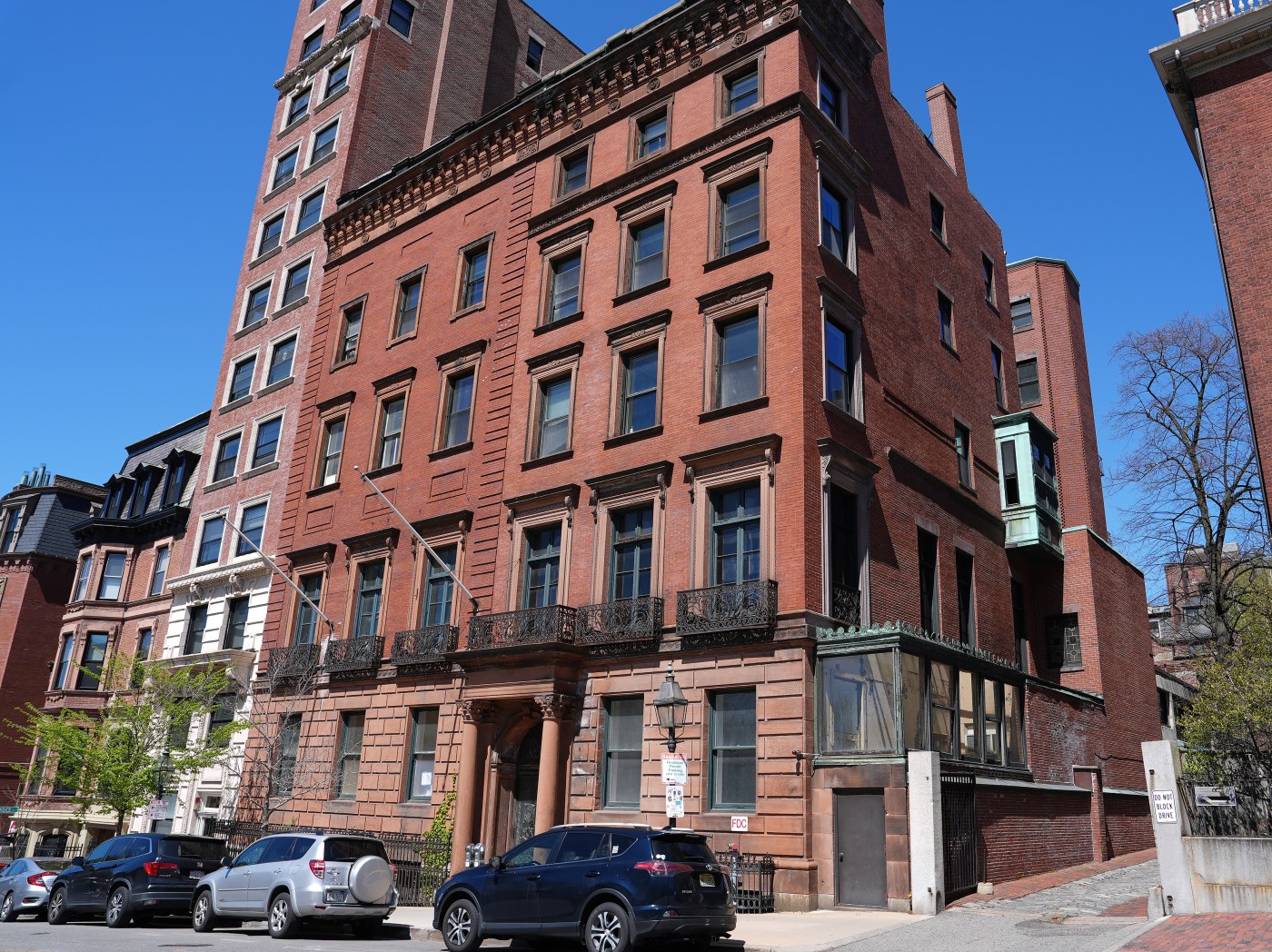
Boston commission that criticized Mayor Wu accused of overreach in push to landmark private property
Amid its spat with the Wu administration, the Boston Landmarks Commission is being accused of overreaching its authority by pushing to designate the interior of a private property a historic landmark to kill the owners’ housing development plans.
The pushback around the Commission’s proposed designation for 46 Beacon St., referred to as the Eben Jordan Jr. House in a “draft study report” recommending its preservation, could leave the city in a precarious legal situation, and comes as the Wu administration is battling the board on another push to impose a similar interior landmark status on City Hall.
The differing approach by both sides — in terms of the board’s desire for autonomy and the administration’s push for inclusion in the City Hall process — contributed to the mayor’s decision to fire the Commission’s longtime executive director, Rosanne Foley, this month, per internal communications obtained by the Herald.
The latest spat is centered around whether it’s appropriate for the Commission to advance a petition put forward in 1977 that sought to designate landmark status for the interior of a Beacon Hill mansion but has largely sat dormant for nearly 50 years, a point of contention raised by the property ownership team at Tuesday’s hearing.
“I know a lot of the history of the Landmarks Commission; I voted to create it just about 50 years ago,” Larry DiCara, a former city councilor and attorney serving as a consultant for the property owners, told the Herald. “The whole idea was to focus on very significant buildings, and I think they’ve done that for the most part.”
The Commission’s creation by state legislation as Boston’s citywide historic preservation agency in 1975 came “in the aftermath of massive urban renewal that chopped down chunks of downtown to create Government Center.” The project destroyed streets like a section known as Cornhill, which many people thought should have been saved at the time, DiCara said.
“That was the backdrop of it in the ‘70s,” DiCara said. “The goal was really simple. It was not to walk up and down the street and say, ‘you’re a landmark, you’re a landmark, you’re a landmark’ and certainly not to take the interior of anyone’s house.”
DiCara said the property owners, who per state records are listed as James Keliher and Geoffrey Caraboolad of Mainsail Management, are looking to restore the exterior of the building, “reinvent” the property as roughly eight residential units, and then sell it after the project is completed.
The real estate company purchased 46 Beacon from the Unification Church last September for $20.5 million, per records from the Suffolk County Registry of Deeds.
The church, a religious movement derived from Christianity whose members are informally known as Moonies after its founder and leader Sun Myung Moon, had bought the property in foreclosure in 1976, records show. The price is listed in media reports as $475,000.
Related Articles
Wu says she directed police response at Emerson encampment
Boston city councilor calls for leadership change at BPD crime lab amid sexual assault test kit backlog
Suffolk DA Kevin Hayden pays $5,000 for state ethics law violation in Arroyo race
Neighbors vow to keep fighting Boston, pro soccer team’s plans for White Stadium redevelopment
Boston Mayor Michelle Wu fires head of commission that criticized her administration
While not explicitly stated by commissioners during the hearing, the board’s draft report and those who contributed to it and spoke in favor of a landmark designation during public testimony made clear that revival of the nearly-50-year-old preservation effort is in response to current development plans.
Commission Chair Bradford Walker said that while a landmark designation for just interior spaces may seem “unusual,” the building’s location triggers review from the Beacon Hill District Commission for any exterior changes.
“After a controversial period of commercial use followed by a foreclosure, in 1977 residents of Boston filed a petition to protect the Eben Jordan Jr. House through an interior and exterior landmark designation,” the Commission’s draft study report prepared in part by the consultant Historic New England, states.
“The petition remained active but no further steps were taken until nearly five decades later, when the property was purchased by a residential developer and threatened by demolition related to undocumented hazardous materials abatement, as well as conversion into multiple condominium units, the details of which are unspecified and unknown,” the report states.
Martha Brest, an abutter who contributed photos to the report, said, “This building has great potential to be more beneficial to our neighborhood than just having luxury condos.”
The Eben Jordan Jr. House, created in 1913 by combining existing townhouses at 46 and 47 Beacon St. into a single residence, is “highly significant,” the report contends, “for its associations with a diverse range of people important to business, women’s and African American rights, politics, arts, design and culture.”
Named after a businessman and philanthropist who lived there and contributed to its current architectural design, the building was used over past decades as an “important quasi-public space” on Beacon Hill, with institutional use and a degree of public access for 99 years, from 1924 to 2023, the report states.
It currently lacks public access, however, which the property owners think should preclude any preservation efforts by the Commission, John Perten, an attorney with Sheehan Phinney, the law firm representing the property owners, said. DiCara said a landmark designation has no standing and could lead to a lawsuit against the city.
Perten further testified that the building has mold, water damage and asbestos, and looks nothing like the interior photos included in the commission’s draft report, which preservation proponents disputed.
Chelsea Blanchard, an architect for the commission, said interior public access is not a requirement for landmarking a property, despite the assertions.
Commissioners said they declined the property owners’ earlier invite to tour the interior of the building after Foley, the dismissed executive director, cited concerns with possible open meeting law violations, but agreed to schedule a site visit before taking a vote on the landmarking designation.

